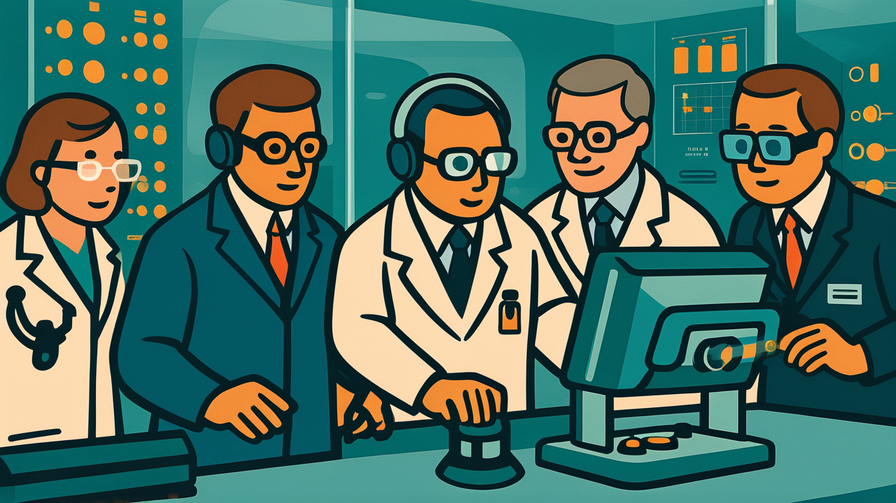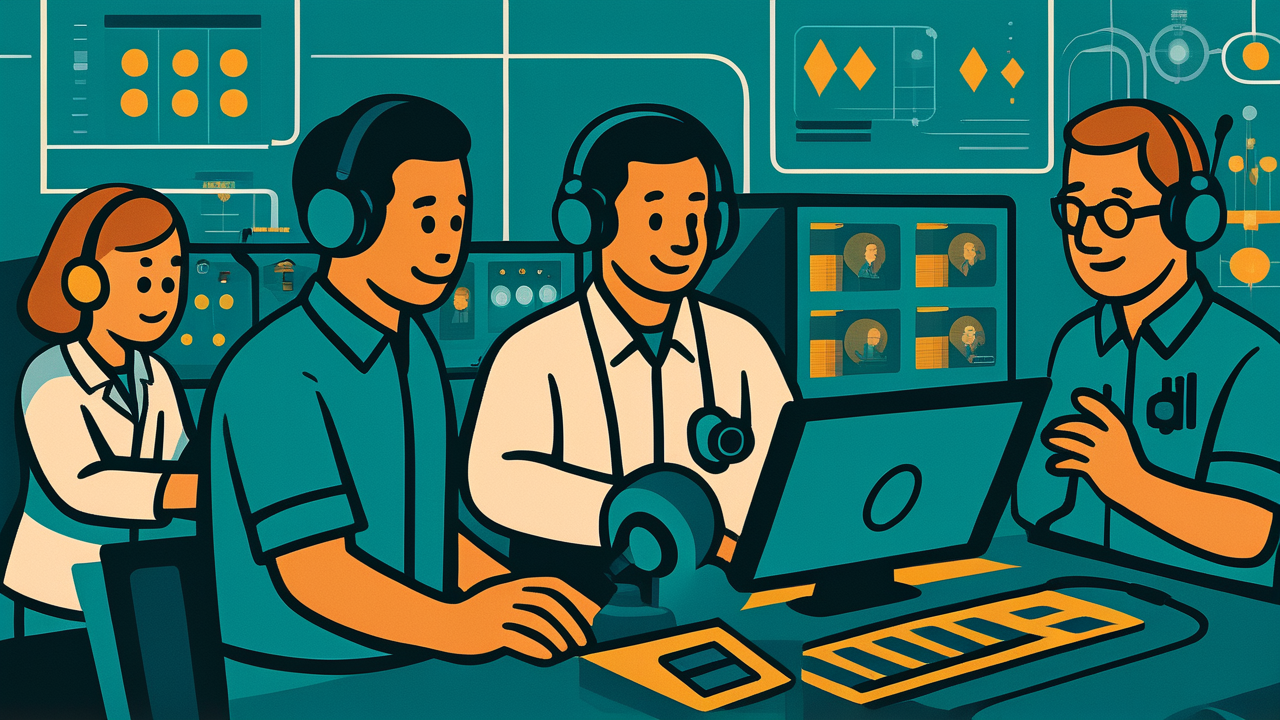[Disclaimer] This article is reconstructed based on information from external sources. Please verify the original source before referring to this content.
News Summary
The following content was published online. A translated summary is presented below. See the source for details.
Meta has opened a groundbreaking $16 million audio research laboratory in Cambridge, UK, designed to develop advanced audio technologies for their future AR and AI glasses, including Ray-Ban Meta and Oakley Meta products. The facility features ultra-quiet acoustic testing chambers, including one large enough for a car, and one of the world’s largest configurable reverberation rooms with 101 adjustable panels that can simulate any environment from a phone booth to a cathedral. The lab includes realistic home environments equipped with sensors and motion tracking zones covering 3,600 square feet with sub-millimeter accuracy. Meta’s goal is to create intelligent audio systems that adapt to users and their surroundings, using machine learning to enhance desired sounds while reducing background noise. Located in the UK’s Ox-Cam corridor, this investment reinforces the UK’s position as a technology hub and Meta’s commitment to the region, where they employ over 5,500 people. The lab will help develop AI-powered audio that makes conversations clearer in noisy environments and improves the overall listening experience in everyday situations.
Source: Meta News
Our Commentary
Background and Context

Imagine wearing glasses that can understand what you want to hear and filter out everything else—like having a superpower for your ears. That’s exactly what Meta (the company behind Facebook, Instagram, and WhatsApp) is working on in their new UK laboratory.
This isn’t just about making music sound better—it’s about creating glasses that can hear and think like humans do. When you’re in a noisy cafeteria, your brain automatically focuses on your friend’s voice and tunes out the background chatter. Meta wants to give that same ability to smart glasses using artificial intelligence.
Expert Analysis
The technology behind this lab is mind-blowing. Let’s break down what makes it special:
Anechoic chambers are rooms so quiet that you can hear your own heartbeat. They have special walls that absorb all sound, creating perfect silence for testing how devices pick up audio. Meta’s chamber is huge—big enough to park a car inside!
The configurable reverberation room is like a shape-shifting space. With 101 movable panels, scientists can make it sound like any environment—from the echo of a cathedral to the muffled sound of a tiny closet. This lets them test how their smart glasses will work whether you’re in a gym, a library, or at a concert.
The motion tracking zones use cameras that can track movement down to fractions of a millimeter. This helps the AI learn how sounds change as you move around, ensuring the audio adjusts naturally as you turn your head or walk through different spaces.
Additional Data and Fact Reinforcement
The scale and sophistication of this project is impressive:
• $16 million investment (£12 million) in cutting-edge audio research
• 3,600 square feet of motion tracking space
• 101 individually adjustable acoustic panels in the reverberation room
• Testing environments include full kitchens and living rooms with sensors
• Located in the prestigious Ox-Cam corridor (between Oxford and Cambridge)
Meta employs over 5,500 people in the UK, making it their largest engineering base outside the United States. This shows they’re serious about making the UK a hub for their future technology development.
Related News
This lab opening comes as Meta pushes deeper into augmented reality (AR) and AI-powered wearables. Their Ray-Ban Meta glasses, launched recently, already include features like taking photos, playing music, and answering questions. This new lab will help make future versions much smarter about audio.
The timing aligns with growing competition in the smart glasses market. Apple is rumored to be developing their own AR glasses, and Google has been working on similar technology. By investing heavily in audio—often an overlooked aspect of AR—Meta is trying to create a unique advantage. Good audio is crucial for AR because it needs to blend seamlessly with the real world while adding helpful information.
Summary

Meta’s new Cambridge audio lab represents a major leap forward in making smart glasses that can understand and filter sound as intelligently as the human brain. By creating spaces that can simulate any acoustic environment and using AI to learn how we hear, Meta is working to solve one of the biggest challenges in wearable technology.
For students interested in technology, this lab showcases how different fields come together—physics (acoustics), computer science (AI), engineering (hardware design), and even psychology (understanding how humans perceive sound). The goal isn’t just to make gadgets; it’s to enhance human abilities in ways that feel natural and helpful. Whether you’re trying to hear a teacher in a noisy classroom or enjoy music while walking down a busy street, this technology could make everyday listening experiences dramatically better.
Public Reaction
UK government officials, including Chancellor Rachel Reeves, have welcomed the investment as a boost to the country’s tech sector and the Oxford-Cambridge growth corridor. Tech enthusiasts are excited about the potential for truly adaptive audio in consumer devices. Privacy advocates, however, raise questions about devices that can intelligently filter conversations, wondering about data collection and processing. Local universities and researchers see opportunities for collaboration, while audio engineers praise Meta’s comprehensive approach to acoustic testing.
Frequently Asked Questions
Q: How will these smart glasses know what I want to hear?
A: The glasses use AI to learn patterns—like detecting when you’re trying to have a conversation versus listening to music—and automatically adjust what sounds they enhance or reduce.
Q: When will regular people be able to buy glasses with this technology?
A: While Meta hasn’t announced specific dates, research from labs like this typically takes 2-5 years to appear in consumer products.
Q: Why does Meta need such a big, expensive lab for audio?
A: Creating natural-sounding audio that works in every environment is incredibly complex. The lab lets them test millions of scenarios to ensure the technology works perfectly in real life, not just in theory.


